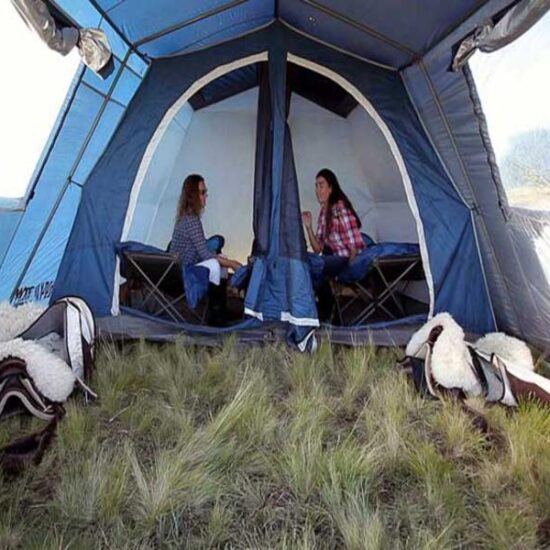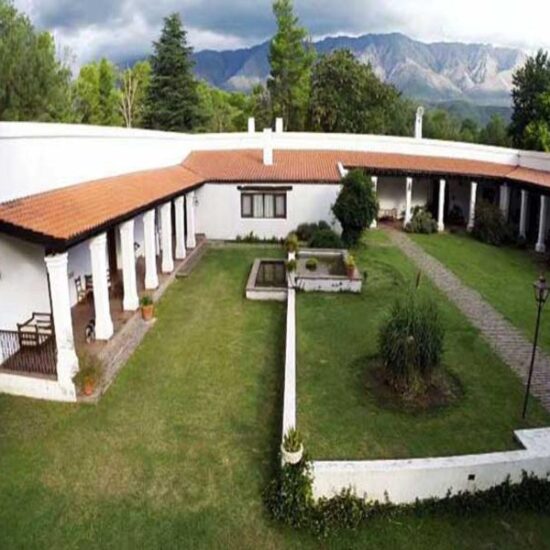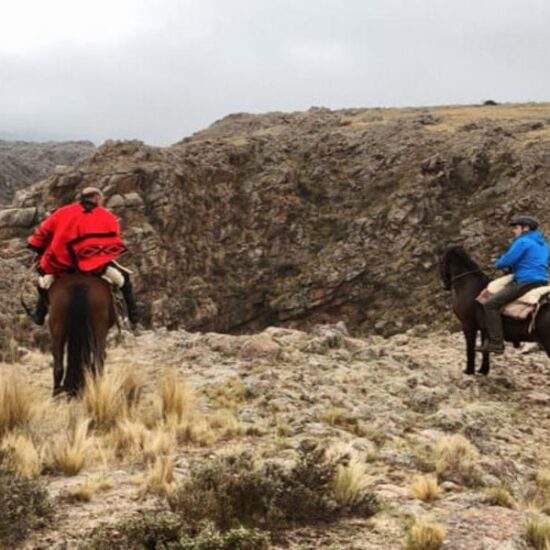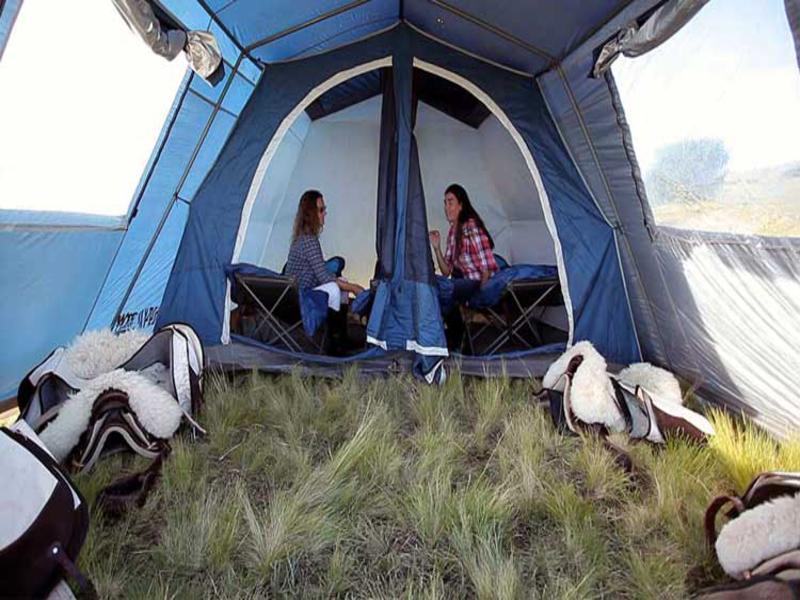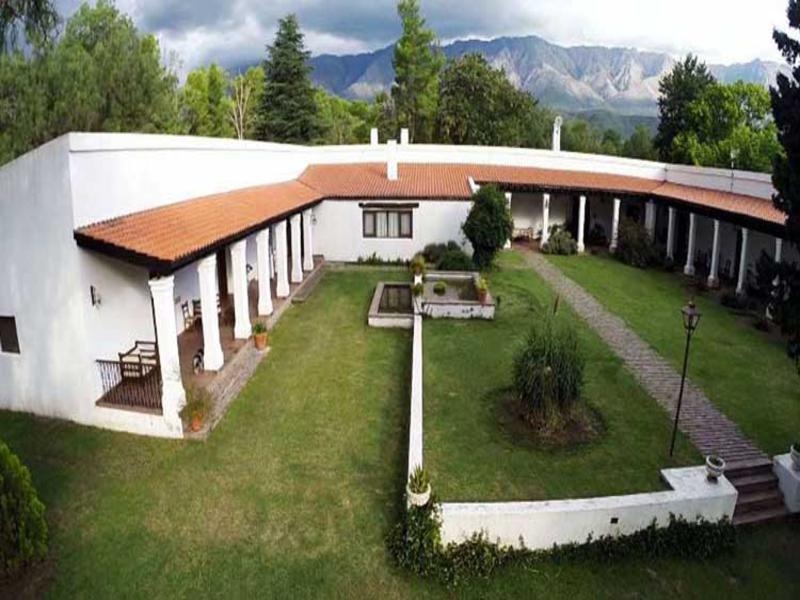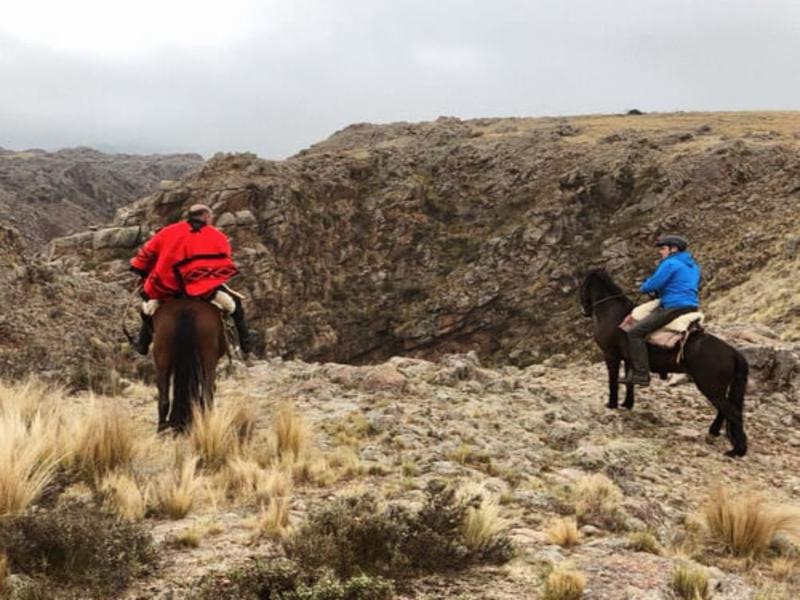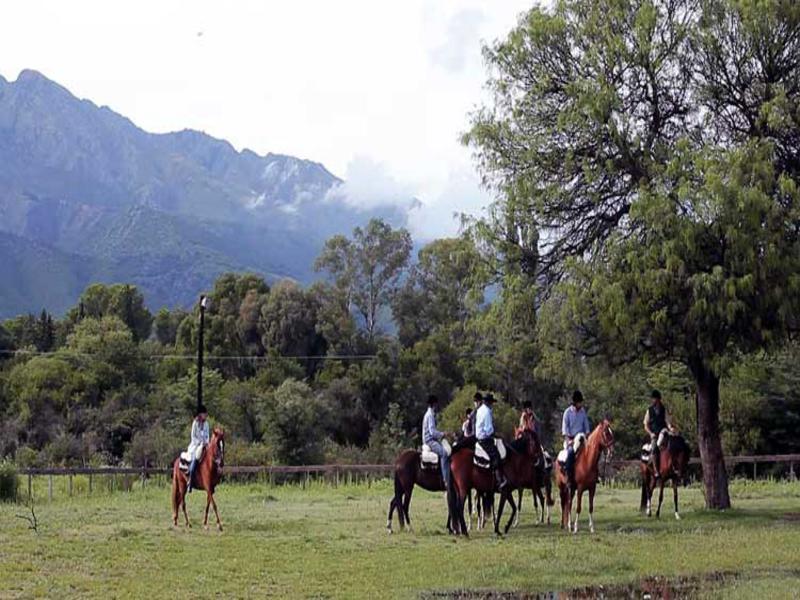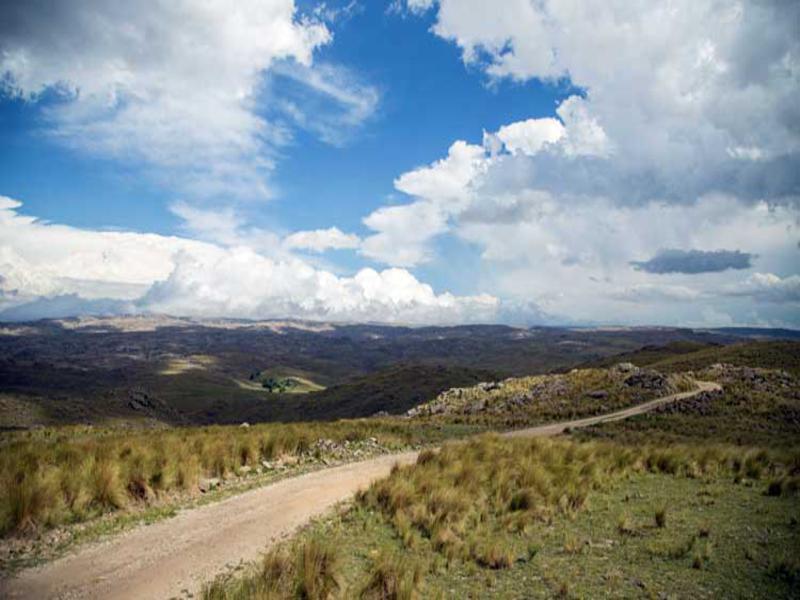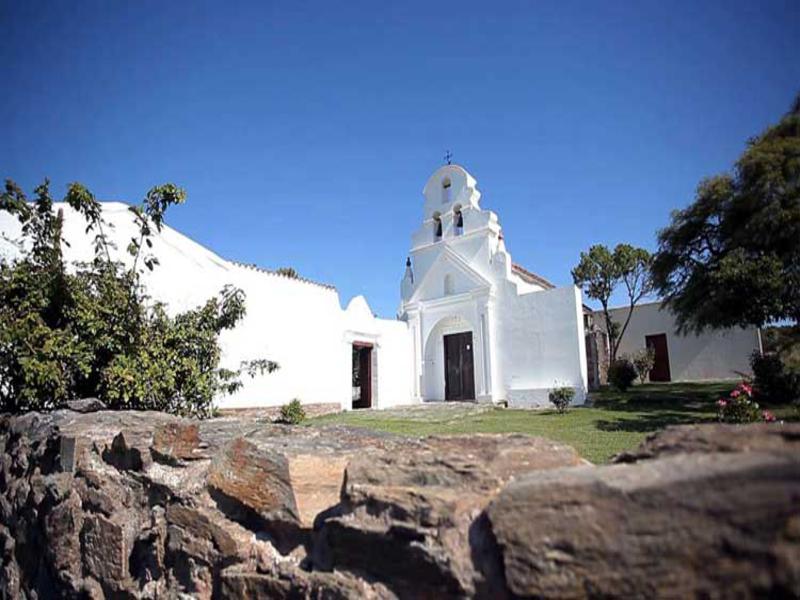Horse Riding Through the Sierras in Cordoba
This horse riding expedition in Cordoba is very interesting and it goes together with an amazing landscape. It’s a unique equestrian experience to go horse riding through the sierras and quebradas. During the ride you will see many streams and rivers and visit many historic places and towns. The horses will take you through the lands where the Jesuits left their trace.
About the place
You can’t talk about Cordoba without mentioning the Jesuits. This is a religious order created in 1.534 by San Ignacio de Loyola to educate and evangelize the new world. They had a big influence in this province and had a lot to do with its progress. As a result, they built many Estancias around Cordoba that had different purposes. Some of them were convents, some were big agricultural establishments that were the economic backup for the work of the evangelization. Furthermore, the Jesuits built schools and universities, like the Universidad de la Argentina in 1.613.
Their horses
Pablo and Nestor are the owners of Haras Ampascachi. Here they breed Peruvian Horses. They investigated and created this special ride so that people could do it on their horses. These are originally from Peru and descendants from the Spanish horses. Peruvian horses are famous for their smooth way of moving. It is called the “paso llano”. This is a lateral trot, unlike all the others that do a horizontal and vertical one. This is a four-beat gait between that replaces the trot, and its main characteristic is how comfortable it is.
Nestor and Pablo breed them and also have their own training method. As a result, they have well behaved horses. The Haras is found in the region of Nonos, where this adventure begins.
The ride
Some of the towns that will be on the route are San Javier; San Jeronimo; Cruz de Caña; and Nono. The region belongs to Traslasierra, a land that is famous for its particular vegetation and for its rivers with sand beaches. It’s a hidden valley that lies to the west of the Achala summit.
In the past, this region was inhabited by the Comechingones tribe. Later, it was conquered by the Spanish people. This is why it’s common to see the Jesuit’s architectural style in some buildings. Certainly, the autochthonous lives with the present; the “criollo” culture with the modern one.
- Destination
-
Departure
Cordoba City
-
Included
AccomodationAdvancedAlcoholic DrinksBeginnerBreakfastDinnerEquipmentFull Board AccomodationIntermediateLunchprivate GuidesRiding HorsesTransport
-
Not Included
Caballos de equitaciónEconomicEndurance HorsesGimnasioHalf Board AccomodationJumping HorsesLocal ToursLuxuryPolo HorsesSpaTickets to National Parks
Itinerary
- Pick up at the airport in Cordoba and transfer to the Haras Ampascachi, outside Nono. The house of this Estancia has a colonial style and old Jesuit’s constructions can be found. It has 11 bedrooms, 2 apartments and a swimming pool. Here is where the Peruvian horses are bred, which makes it a great destination for horse lovers. The car trip from Cordoba City to Nono is approximately 2 and a half hours.
- First day in the Haras: depending on the arrival time, you can enjoy a typical lunch meal. The rest of the day is to relax, to connect with nature and get to know the Estancia and its horses. Dinner will also be here.
- After a delicious country breakfast, the riders will see the horses and meet the one that will be the partner in the ride. There will be a two-hour adaptation ride through the surroundings to get to know the horses and their particular way of moving, as well as each rider’s skills. They will be back for lunch where an amazing asado criollo will be waiting and then some resting to get ready for the next day. An option for the night: a documentary about the history of horses.
- On the third day, after a delicious breakfast, riders and guides will get the horses and equipment ready to begin the adventure. They will leave the Haras and go through Nono. They will follow the Sauces River until a very lovely place where they will have a picnic for lunch. After this, they will ride until Villa Cura Brochero (known as the priest of the gauchos). They will get to the Panaholma River and ride by its side for a few kilometres until reaching the cottages of Panaholma. After taking care of the horses, riders will rest and enjoy the nature. The camping will be here.
- After breakfast, the horses will be ready to begin the new day that will finish in Ambul, a small town surrounded by nature full of high and low sierras and beautiful trees. After lunch they will arrive to Estancia Taruca Pampa, one of the most important Estancias. They will be received with a nice asado that the owners will have ready. There will be some guitar playing by the gauchos. The night will be spent in a camp in that area.
- On the third day riding they will arrive to Pueblo de San Jeronimo. This is a special little town that is located in a privileged area of the mountain range of Sierras Grandes at 1.750 metres above sea level. It has one of the best views of Valle del Pocho. On the way here, mountains and valleys will be crossed until arriving at San Jeronimo Cottages where riders will get to rest and have a nice relaxing bath.
- On the fourth day of riding, you’ll arrive at Pueblo Cruz de Caña. This old town was also known as La Posta given that it was a stop on the way from the North to San Juan. Here, travellers stopped for provisions and a good sleep. The name comes because of the cross made out of sugarcanes in honor of a man that was killed there in a fight. On the way you’ll go through La Cienaga de Britos and have lunch at Puesto de Don Santos de Barro, a family place where the Ampascachi team will be waiting with everything ready. The night will be spent at Cruz de Caña Cottages.
- Visit to the Jesuit Estancia, La Candelaria. This is a highlight of the ride! Together with other Jesuit estancias in Cordoba, this one was declared a World Heritage Site by UNESCO. Lunch will be here and after looking around the place the ride will continue through La Pampa de San Luis to arrive at mid afternoon to an estancia post in the locality of Majada de Santiago. Here, riders will be received by the gauchos that work there who will offer some “mate” and local food for a meal. Later, a transfer will take the riders back to the cottages of Cruz de Caña where they will have dinner and spend the night.
- On the morning of the sixth day, riders will go back by transfer to the horses at the Majada de Santiago. They will ride until lunch at the banks of the river San Guillermo to then continue to San Jeronimo. Here a transfer will be waiting to take them back to the Haras Ampascachi.
- Back in the Haras, riders can either rest or visit the winery El Noble, located in San Javier. We recommend this option; San Javier is a lovely town! Its old houses have an English style due to their owners who built them for vacation. That’s why the railroad was made. During the night, a goodbye dinner and show at Haras Ampascachi.
Location
Traslasierra Valley (spanish: Valle de Traslasierra) is a natural geographic region of the province of Córdoba, Argentina, located west of the Sierras Grandes and east of the Sierras Occidentales.The tourist capital is the city of Mina Clavero
Other activities for riders and non riders companions
This programme was designed for all of those who want to discover the main destinations in Cordoba province. While riders will meet towns of Traslasierra by horse, the non riders will also get to know some of the most fascinating places in the city of Cordoba apart from the Jesuit Estancias Alta Gracia, La Candelaria, La Caroya and Santa Catalina.
The city of Cordoba is one of the most important in Argentina. It was founded in 1.573 by Jerónimo Luis de la Cabrera and its original name was “Cordoba de la Nueva Andalucía”. It’s cultural and architectural heritage is very important. The touristic sightings include: a visit to the Plaza San Martin, the Cathedral, the Cabildo Historico, the Manzana de las Luces with the Compañia de Jesus’ Church, the National Monserrat School, among others.
The Jesuit Estancias are a big deal in Cordoba, they are all worth knowing, especially the one in the region of Alta Gracia, one of the most beautiful areas of the province. It’s located in the valley of Sierras Chicas, a place the Comechingones used to call Paravachasca, that has a very kind weather famous for being perfect for the health care. It was here that Ernesto “Che” Guevara lived for a while to get better of his asma.



